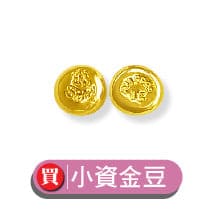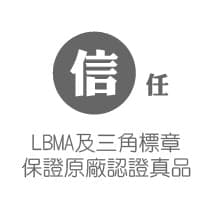Effects of silver in water
銀在水中的作用
Gregory D. Jennings
Oct 13th, 2010
Silver occurs naturally in the environment, mainly in the form of its very insoluble and immobile oxides, sulfides and some salts. Because silver ions are bacteriastatic, silver is used both as an emergency drinking water disinfectant and impregnated in some water filters to prevent microbial regrowth.
銀是自然存在於環境中的,主要以極難溶且不可移動的氧化物,硫化物和某些鹽的形式存在。由於銀離子具有抑菌作用,因此白銀既可以用作緊急飲用水消毒劑,又可以浸入某些濾水器中以防止微生物再生。
Silver has been used in the United States for water disinfection since the 1950s, and numerous commercial water filters using silver are currently being marketed today.
自1950年代以來,銀已在美國用於水消毒,並且當今大量銷售使用銀的商業水過濾器。
Household filter systems using ceramic filters coated in the anti-bacterial agent colloidal silver have been shown to be effective in eliminating bacteria in contaminated household water in various locations around the world.
已經證明,使用塗覆有抗菌膠體銀的陶瓷過濾器的家用過濾器系統可以有效地消除世界各地受污染的家用水中的細菌。
In particular, positive results for a low-cost filter technology being used in flood-prone areas of Southeast Asia were recently noted in an International Development Enterprises report on filter technology trials to the International Federation of Red Cross and Red Crescent Societies.
特別是,最近在一份國際開發企業向紅十字會與紅新月會國際聯合會提交的有關過濾器技術試驗的報告中指出,在東南亞易發洪水地區使用低成本過濾器技術取得了積極成果。
Antibacterial capability
抗菌能力
The specific antibacterial mechanism of silver is not clearly understood, but research with E. coli and S. aureus has shown that silver treatment of these microorganisms has resulted in DNA losing its replication ability.
白銀的具體抗菌機制尚不清楚,但對大腸桿菌和金黃色葡萄球菌的研究表明,對這些微生物進行銀處理已導致DNA喪失其複制能力。
Research on drinking water disinfection systems has shown that silver can be used successfully to control bacterial growth. It has also been found that the addition of copper and silver to water systems may allow the concentration of free chlorine to be reduced while still providing comparable sanitary quality of the water.
對飲用水消毒系統的研究表明,銀可以成功地用於控制細菌的生長。還已經發現,向水系統中添加銅和銀可以降低游離氯的濃度,同時仍提供可比的水衛生質量。
Still other research has shown that silver can be used in hospital water systems to control Legionella and in cooling towers to control bacterial growth. Silver has also been used to enhance the effectiveness of ultraviolet (UV) radiation in inactivating viruses in water.
還有其他研究表明,銀可用於醫院供水系統中的軍團菌控制和冷卻塔中的細菌控制。銀還已用於增強紫外線(UV)輻射滅活水中病毒的效力。
Many commercial POU water filters make use of silver impregnated activated carbon to remove contaminants in household water supplies.
許多商用POU濾水器都使用浸漬銀的活性炭來去除家庭供水中的污染物。
Bacteria can multiply on carbon media that does not contain silver and, subsequently, be released into the water supply. Silver impregnation prevents contamination of the active carbon filter and provides additional bactericidal effects.
細菌可以在不含銀的碳介質上繁殖,隨後被釋放到供水系統中。銀的浸漬可防止活性炭過濾器受到污染,並提供額外的殺菌作用。
Health concerns
健康問題
The World Health Organization’s (WHO) guidelines for drinking water quality indicate that there are no adequate data with which to derive a health-based value for silver in drinking water.
世界衛生組織(WHO)的飲用水水質準則表明,沒有足夠的數據可得出飲用水放銀衍生出健康的價值。
These guidelines state that, "where silver salts are used to maintain the bacteriological quality of drinking-water, levels of silver up to 0.1 mg/liter can be tolerated without risk to health."
這些準則指出:“在使用銀鹽維持飲用水的細菌學質量的情況下,可以忍受0.1 mg / L的銀水平,而不會危害健康。”
Silver is regulated by US Environmental Protection Agency (EPA) National Secondary Drinking Water Regulations.
白銀受美國環境保護局(EPA)國家二級飲用水法規的監管。
The secondary maximum contaminant level in public water supplies is 0.1 mg/liter, which is a non-enforceable guideline based on possible cosmetic effects, such as skin discoloration.
公共供水中的次要最大污染物水平是0.1 mg / L,這是基於可能的美容效果(例如皮膚變色)而無法執行的準則。
References
Bayati, M. A. 1997. Even Carbons Have a Silver Lining: Silver impregnated filters offer extra protection against bacteria. Water Technology, July, 1997.
Bullard, M. 2002. Low-Cost Household Water Purifiers for Flood-Prone Areas: International Development Enterprises (IDE) report on filter technology trials to the International Federation of Red Cross and Red Crescent Societies (IFRC). http://www.potpaz.org/Mekong.doc
Butkus M. A., Labare M. P., Starke J. A., Moon K., Talbot M. Use of aqueous silver to enhance inactivation of coliphage MS-2 by UV disinfection. Appl Environ Microbiol. 2004 May;70(5):2848-53.
Codony F, Domenico P, Mas J. 2003. Assessment of bismuth thiols and conventional disinfectants on drinking water biofilms. J Appl Microbiol. 2003;95(2):288-93.
Feng, Q. L., J. Wu, G. Q. Chen, F. Z. Cui, T. N. Kim, J. O. Kim. 2000. A mechanistic study of the antibacterial effect of silver ions on Escherichia coli and Staphylococcus aureus. J Biomed Mater Res, 52, 662-668, 2000.
Kim J., Cho M., Oh B., Choi S., Yoon J. 2004. Control of bacterial growth in water using synthesized inorganic disinfectant. Chemosphere. 2004 May;55(5):775-80.
Stout J. E., Yu V. L. 2003. Experiences of the first 16 hospitals using copper-silver ionization for Legionella control: implications for the evaluation of other disinfection modalities. Infect Control Hosp Epidemiol. 2003 Aug;24(8):563-8.
USEPA. 1992. Secondary Drinking Water Regulations: Guidance for Nuisance Chemicals. EPA 810/K-92-001. http://www.epa.gov/safewater/consumer/2ndstandards.html
WHO. 2004. Draft third edition of the WHO Guidelines for Drinking-Water Quality. Geneva, World Health Organization. http://www.who.int/ water_sanitation_health/dwq/guidelines3rd/en/
Yahya MT, Landeen LK, Messina MC, Kutz SM, Schulze R, Gerba CP. 1990. Disinfection of bacteria in water systems by using electrolytically generated copper:silver and reduced levels of free chlorine. Can J Microbiol. 1990 Feb;36(2):109-16.
Gregory D. Jennings is an extension specialist in biological and agricultural engineering for the North Carolina Cooperative Extension Services at NC State University, Raleigh, NC.
Shiny黃金白銀交易所
引用來源: 水科技 www.watertechonline.com
銀在水中的作用
Gregory D. Jennings
Oct 13th, 2010
Silver occurs naturally in the environment, mainly in the form of its very insoluble and immobile oxides, sulfides and some salts. Because silver ions are bacteriastatic, silver is used both as an emergency drinking water disinfectant and impregnated in some water filters to prevent microbial regrowth.
銀是自然存在於環境中的,主要以極難溶且不可移動的氧化物,硫化物和某些鹽的形式存在。由於銀離子具有抑菌作用,因此白銀既可以用作緊急飲用水消毒劑,又可以浸入某些濾水器中以防止微生物再生。
Silver has been used in the United States for water disinfection since the 1950s, and numerous commercial water filters using silver are currently being marketed today.
自1950年代以來,銀已在美國用於水消毒,並且當今大量銷售使用銀的商業水過濾器。
Household filter systems using ceramic filters coated in the anti-bacterial agent colloidal silver have been shown to be effective in eliminating bacteria in contaminated household water in various locations around the world.
已經證明,使用塗覆有抗菌膠體銀的陶瓷過濾器的家用過濾器系統可以有效地消除世界各地受污染的家用水中的細菌。
In particular, positive results for a low-cost filter technology being used in flood-prone areas of Southeast Asia were recently noted in an International Development Enterprises report on filter technology trials to the International Federation of Red Cross and Red Crescent Societies.
特別是,最近在一份國際開發企業向紅十字會與紅新月會國際聯合會提交的有關過濾器技術試驗的報告中指出,在東南亞易發洪水地區使用低成本過濾器技術取得了積極成果。
Antibacterial capability
抗菌能力
The specific antibacterial mechanism of silver is not clearly understood, but research with E. coli and S. aureus has shown that silver treatment of these microorganisms has resulted in DNA losing its replication ability.
白銀的具體抗菌機制尚不清楚,但對大腸桿菌和金黃色葡萄球菌的研究表明,對這些微生物進行銀處理已導致DNA喪失其複制能力。
Research on drinking water disinfection systems has shown that silver can be used successfully to control bacterial growth. It has also been found that the addition of copper and silver to water systems may allow the concentration of free chlorine to be reduced while still providing comparable sanitary quality of the water.
對飲用水消毒系統的研究表明,銀可以成功地用於控制細菌的生長。還已經發現,向水系統中添加銅和銀可以降低游離氯的濃度,同時仍提供可比的水衛生質量。
Still other research has shown that silver can be used in hospital water systems to control Legionella and in cooling towers to control bacterial growth. Silver has also been used to enhance the effectiveness of ultraviolet (UV) radiation in inactivating viruses in water.
還有其他研究表明,銀可用於醫院供水系統中的軍團菌控制和冷卻塔中的細菌控制。銀還已用於增強紫外線(UV)輻射滅活水中病毒的效力。
Many commercial POU water filters make use of silver impregnated activated carbon to remove contaminants in household water supplies.
許多商用POU濾水器都使用浸漬銀的活性炭來去除家庭供水中的污染物。
Bacteria can multiply on carbon media that does not contain silver and, subsequently, be released into the water supply. Silver impregnation prevents contamination of the active carbon filter and provides additional bactericidal effects.
細菌可以在不含銀的碳介質上繁殖,隨後被釋放到供水系統中。銀的浸漬可防止活性炭過濾器受到污染,並提供額外的殺菌作用。
Health concerns
健康問題
The World Health Organization’s (WHO) guidelines for drinking water quality indicate that there are no adequate data with which to derive a health-based value for silver in drinking water.
世界衛生組織(WHO)的飲用水水質準則表明,沒有足夠的數據可得出飲用水放銀衍生出健康的價值。
These guidelines state that, "where silver salts are used to maintain the bacteriological quality of drinking-water, levels of silver up to 0.1 mg/liter can be tolerated without risk to health."
這些準則指出:“在使用銀鹽維持飲用水的細菌學質量的情況下,可以忍受0.1 mg / L的銀水平,而不會危害健康。”
Silver is regulated by US Environmental Protection Agency (EPA) National Secondary Drinking Water Regulations.
白銀受美國環境保護局(EPA)國家二級飲用水法規的監管。
The secondary maximum contaminant level in public water supplies is 0.1 mg/liter, which is a non-enforceable guideline based on possible cosmetic effects, such as skin discoloration.
公共供水中的次要最大污染物水平是0.1 mg / L,這是基於可能的美容效果(例如皮膚變色)而無法執行的準則。
References
Bayati, M. A. 1997. Even Carbons Have a Silver Lining: Silver impregnated filters offer extra protection against bacteria. Water Technology, July, 1997.
Bullard, M. 2002. Low-Cost Household Water Purifiers for Flood-Prone Areas: International Development Enterprises (IDE) report on filter technology trials to the International Federation of Red Cross and Red Crescent Societies (IFRC). http://www.potpaz.org/Mekong.doc
Butkus M. A., Labare M. P., Starke J. A., Moon K., Talbot M. Use of aqueous silver to enhance inactivation of coliphage MS-2 by UV disinfection. Appl Environ Microbiol. 2004 May;70(5):2848-53.
Codony F, Domenico P, Mas J. 2003. Assessment of bismuth thiols and conventional disinfectants on drinking water biofilms. J Appl Microbiol. 2003;95(2):288-93.
Feng, Q. L., J. Wu, G. Q. Chen, F. Z. Cui, T. N. Kim, J. O. Kim. 2000. A mechanistic study of the antibacterial effect of silver ions on Escherichia coli and Staphylococcus aureus. J Biomed Mater Res, 52, 662-668, 2000.
Kim J., Cho M., Oh B., Choi S., Yoon J. 2004. Control of bacterial growth in water using synthesized inorganic disinfectant. Chemosphere. 2004 May;55(5):775-80.
Stout J. E., Yu V. L. 2003. Experiences of the first 16 hospitals using copper-silver ionization for Legionella control: implications for the evaluation of other disinfection modalities. Infect Control Hosp Epidemiol. 2003 Aug;24(8):563-8.
USEPA. 1992. Secondary Drinking Water Regulations: Guidance for Nuisance Chemicals. EPA 810/K-92-001. http://www.epa.gov/safewater/consumer/2ndstandards.html
WHO. 2004. Draft third edition of the WHO Guidelines for Drinking-Water Quality. Geneva, World Health Organization. http://www.who.int/ water_sanitation_health/dwq/guidelines3rd/en/
Yahya MT, Landeen LK, Messina MC, Kutz SM, Schulze R, Gerba CP. 1990. Disinfection of bacteria in water systems by using electrolytically generated copper:silver and reduced levels of free chlorine. Can J Microbiol. 1990 Feb;36(2):109-16.
Gregory D. Jennings is an extension specialist in biological and agricultural engineering for the North Carolina Cooperative Extension Services at NC State University, Raleigh, NC.
Shiny黃金白銀交易所
引用來源: 水科技 www.watertechonline.com

















